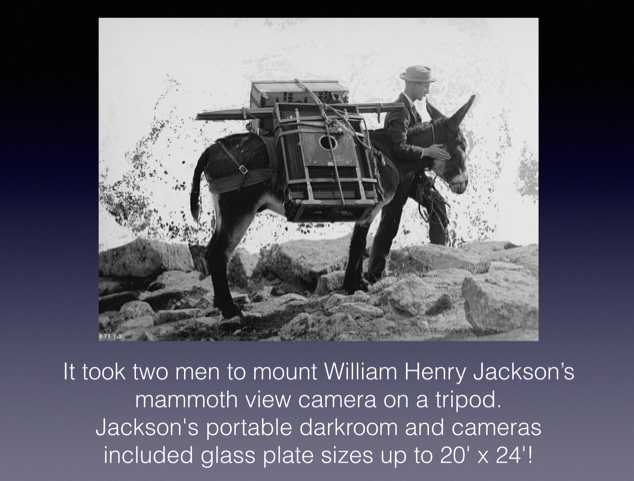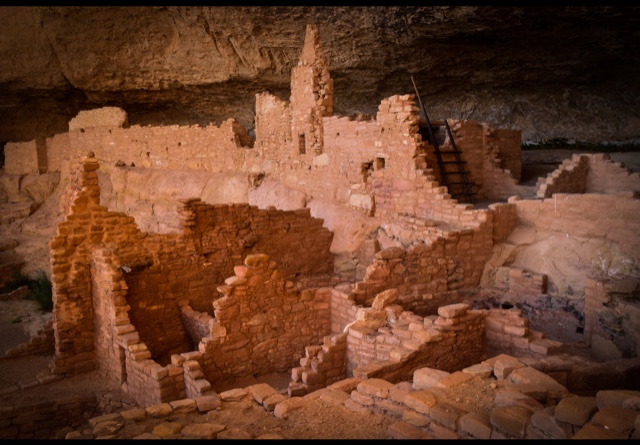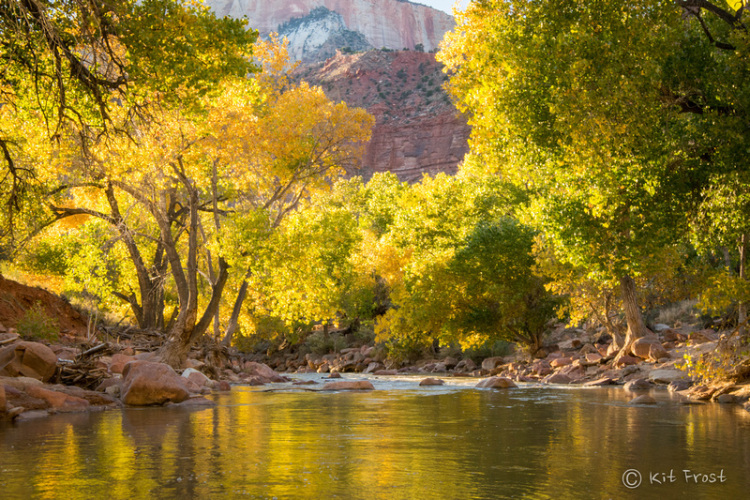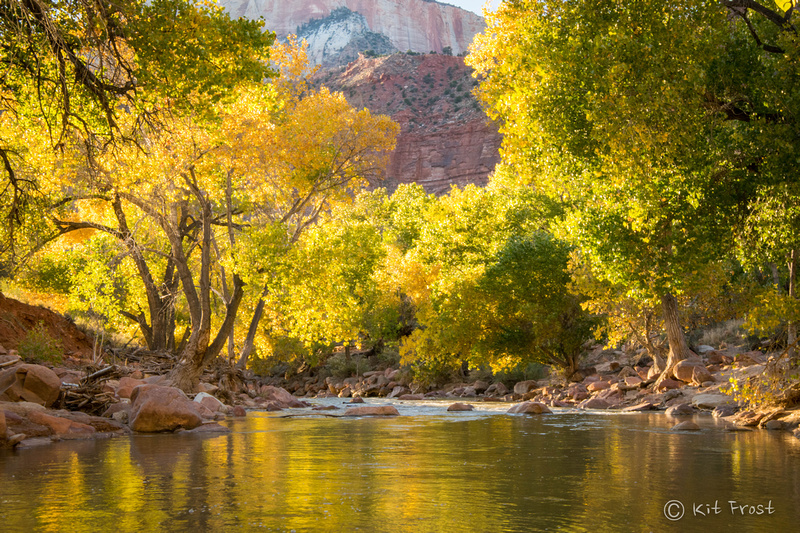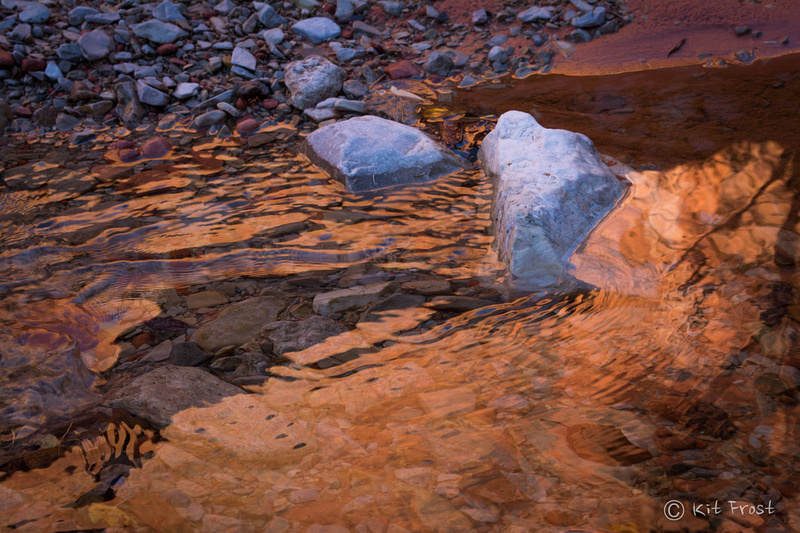The Challenges of Photographing in National Parks

Capturing the grandness of the canyon from Grandview Point. ©Kit Frost
These images were all taken in our National Parks. As a frequent visitor to our Parks, I see an increase in visitation, especially this past year. If you went to a National Park during the summer months of May, June, July and August, you could expect crowds. But this year I retired, so I could travel whenever I pleased. I choose May for Crater Lake, June for Acadia, September for the Grand Canyon, October for Capitol Reef, and November for Zion.
I don’t know whether it’s because the #FindYourPark campaign is driving more folks to our parks, or the economy is truly in recovery (Average entrance fee: $30.) but I do know this: unless you get away from the rim, away from the favorite hiking trails, or find an off the beaten path location in the parks, there are crowds, big crowds. Add to that the tripod I carry and before you know it, I’ve got a crowd setting up their selfie sticks and cameras nearby (sometimes kicking my tripod). In Zion this year, it’s estimated that there were over 1 million more visitors in 2015 than 2014.
2014 Visitors
Great Smoky Mountains 10,099,276
Grand Canyon 4,756,771
Yosemite 3,882,642
Yellowstone 3,513,484
Zion National Park 3,189,696
I’m not suggesting that we lock the park door behind us, but I am saying that as someone who enjoys our National Parks, a good hike, some photography, and backpacking and camping in our Parks I’m concerned.

I made this “sketch” with my iPhone.
Crater Lake is a stunner in the winter. As the resident artist in May, I had the opportunity to explore the park during all kinds of weather. Very few crowds along the rim trail. The Lodge was closed for the season, so there were no accommodations.
What I do to mitigate the crowds
Number One, I remember that the parks are for all of us. In order to have my experience and to honor others, I find the quieter, less crowded times of the day to explore.; that means I can enjoy pre-dawn photography, and get to an off beat location for sunrise. Oftentimes the shuttle driver is the person suggesting where to photograph sunrise and sunset (I scout my preferred location away from those suggestions). The other joy: I stay at camp later and explore the park later in the day, when the tour buses are less likely to be dumping visitors at the most popular trails. Here are some ideas:
- Explore the parks during “off season”.
- Get out and stay out, exploring the park while others are having breakfast/dinner
- Scout locations before setting up for new images
- Steep hikes and long trails (get going early, stay late)
- Tripod: bring it along, but avoid setting it up in an exposed area. It’s like a magnet
- Go off the beaten path (Angels Landing, Emerald Pools, Bright Angel Trail are filled with hikers)
- Take advantage of storms (great photo ops, rarely crowded locations). But be safe.
- I like to go find a tree to sit under, have a snack, and get away from the trail and the noise. It’s never wise to go too far off-trail, but as long as I feel safe and know my way back, I’m golden.
Soundscapes
The Parks Service is introducing a series of programs aimed at showing visitors the importance of listening. I prefer long, quiet hikes and look forward to the “soundscapes” focus in the next few years.
Sound Level
Sound levels in national parks can vary greatly, ranging from among the quietest ever monitored, to extremely loud. While, for example, the din of a typical suburban area fluctuates between 50 and 60 dBA, the crater of Haleakala National Park is intensely quiet, with levels hovering around 10 dBA. Along some remote trails in Grand Canyon National Park, sound levels, at 20 dBA, are softer than a whisper ( Bell, Mace, & Benfield, 2009). The noise levels standing near a snowcoach in Yellowstone National Park, however, can be compared to standing three feet from a churning garbage disposal (California Department of Transportation, 1982).
Our world is getting noisier. With dramatic increases in traffic, the explosion of digital gadgets (think of your buddy’s constantly chirping Smartphone) and our increasing capacity to reach once-remote areas, quiet solitude is a diminishing commodity. Not surprisingly then, the American public comes to parks with natural quiet in mind. They come for the soothing effect of a gurgling stream, a delicate bird song, or the rustle of leaves on a fall day. From the awe-inspiring thunder of a waterfall to the gentle rustle of leaves in the breeze, natural sounds have a subtle but profound impact on visitors. In fact, 72% of Americans say one of the most important reasons for preserving national parks is to provide opportunities to experience natural peace and the sounds of nature (Haas & Wakefield, 1998).
However, natural quiet in parks is increasingly at risk. To study the effects of human-caused noise on visitors, volunteers at Muir Woods National Monument cataloged all sounds they heard, day and night, for a year. What they found was surprising. It was rarely quiet (Monroe, Newman, Pilcher, Manning, & Stack, 2007). Parks are experiencing an on-going acoustic assault by everything from air tours to maintenance equipment. Such noise affects visitors’ perceptions of solitude and tranquility. In a related study at Muir Woods, visitors found increasing levels of human-caused sounds to be unacceptable and even annoying (Monroe et al., 2007). Noisy visitors, loud talking, and other related sounds were found to substantially detract from the quality of the visitor experience. In other studies, noise has been shown to be more disturbing to visitors if it is loud, occurs in bursts, is unpredictable, or if it interferes with quiet activities such as bird watching.
Isolated areas are not exempt. In Grand Canyon, no single location is totally free of aircraft noise, and in some areas it can be heard up to 43 times in a 20-minute period. Backcountry hikers, after September 11, 2001, reported knowing that something was very wrong because there were no sounds from commercial aircraft (Bell, Mace, & Benfield, 2009). Tranquility, it turns out, even in the most remote areas of our national parks, is at stake.
Natural and cultural sounds awaken the sense of awe that connects us to the splendor of national parks and have a powerful effect on our emotions, attitudes, and memories. The National Park Service regards these sounds as part of a web of natural and cultural resources that must be protected.
You can make a difference.
Click this link to the National Parks, Natural Sounds site.
- Speak softly when having conversations, especially on hiking trails and at campsites.
- Be aware that the noise you make could affect other visitors, and encourage friends and family to do the same.
- Be considerate of campground quiet hours.
- Look for mute options on electronic equipment such as cell phones, watches, or cameras.
- Turn off cell phones / avoid using speakerphones.
- Consider leaving iPods and or personal radios in the car or at home.
- Avoid using external speakers that others can hear.
- Participate in non-motorized recreational activites (i.e., hiking, birdwatching, snowshoeing, canoeing)
The great thing about soundscapes is that with just one small change, you can make a dramatic difference. Imagine just talking a little quieter the next time you visit a national park. That alone can help to greatly improve a soundscape.
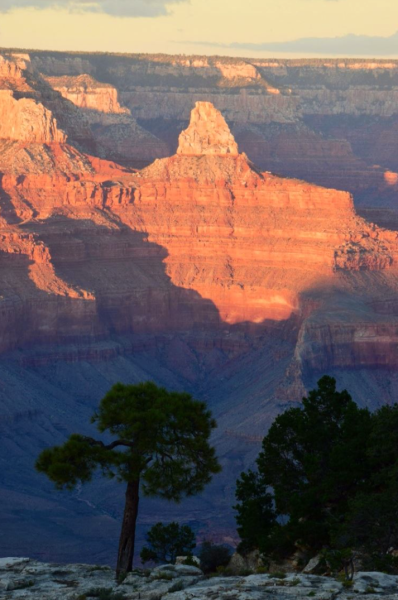
Along the Rim Trail of the Grand Canyon is the most crowded of all the places I visited.
I anticipate that we will see some changes in the parks over the next few years. The parking lots are packed, sometimes with no place to park by 11am, and with or without the shuttle bus, the lines are long. At the Grand Canyon, privately owned buses are allowed to “dump” groups of tourists at each of the overlooks, so for about 1/2 hour the noise level is high and the locations crowded.
I would not want to return to the days of cars in the parks, because the lack of parking and the unsafe conditions are really awful. I think the shuttle service in the Grand Canyon and Zion, Yosemite, are a MUST do. Not only does the driver tell stories, but the convenience is amazing; lines and all. I’ve never waited longer than 10 minutes for a shuttle ride, and after a sweet, long hike, it’s kinda nice to sit and let the driver take me to my next location.

How wonderful to be at the Court of the Patriarchs during a somewhat clearing storm. ©Kit Frost
What’s your experience? When did you visit one of our National Parks? Did you experience crowds? Did you love it anyway?





